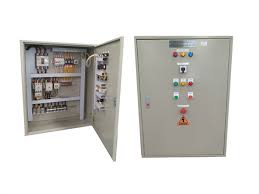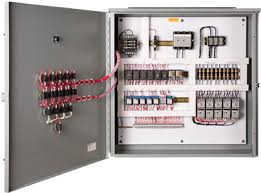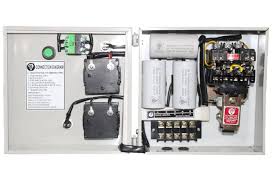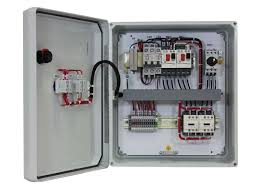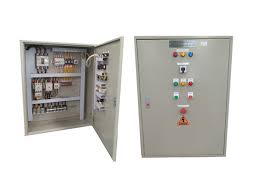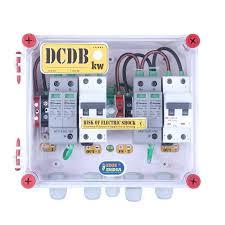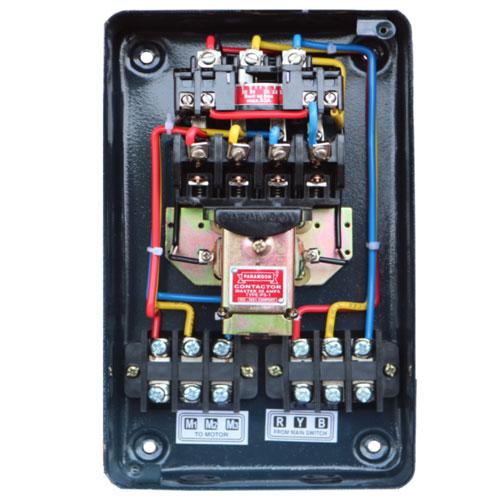Description
Product details
What is a Motor Control Panel? A motor control panel is also referred to by industry as a motor starter control panel. Motor control Panel (MCP) is the device that controls the starting and stopping of an electric motor via an electrical contact and overload relay which stops the motor when it is under excessive load which causes the motor to overheat. Overloads and high current insurance might be skipped in smaller motor controls, relying instead on a circuit breaker, other current protectors, or human intervention. A motor panel may include an automatic or manual method for starting-stopping or stopping the motor. They are an essential part of any electrical system where an electric motor is used, and they come in a variety of sizes and configurations to meet the needs of different applications. A Motor control panel can be used to control single or multiple motors, 3 phase or single phase power supply, and they can be either manually operated or automated. In addition, we have created a list of articles that explorer in deep the Motor Control Panels and its applications: What are the components of a motor control control panel? Motor control circuits contain 2 basic parts but not limited to namely a disconnect switch and a motor starter (motor contactor + overload relay). A disconnector can be placed between the power source and the starter. What are the different types of motor control panels and some examples? Motor control panels come in a variety of shapes and sizes, but all serve the same purpose: to provide power and control for electric motors. The most common type of motor control panel is the starter panel, which houses the starter and associated controls for an electric motor. 5 Things you need to know about Motor Control Panels. A Motor Starter Panel typically is used in industrial and commercial settings, but they can also be used in residential applications. How a Motor Control Panel Work? A controller panel has universal content for motor controls. The connection of the various components enables a specific processing process to occur. Components include electromechanical devices like switches, contract relay motor starters, and overload-protection devices. MCP also allow for switching on or off high-power circuits through low voltage controlled circuits. It provides a safety feature and helps reduce power consumption. What are 3 types of Motor Controls? There are four basic motor controls and drives: the AC DC servo and stepper each having their inputs adapted to the output function that is required for the specific application. What are the Functions of Motor Control? A motor controller can be equipped with manual or automatic controls to stop the motor, start and stop the motor, select forward or reverse movement, select and regulate a speed, regulate or limit torque and protect against overload. What is MCC Motor Control Centers and PCC panel? MCC controls the electrical supply and distribution system. A panel that supplies or is rated at a voltage of at least 415 volts may be called PCC whereas panels that are capable of supplying Lt motor power are called MCC. What is the Difference between MCC Motor Control Centers and MCP Motor Control Panels? The MCC Motor control center assemblies are UL-approved assemblies that have been generally defined in the NEMA and UL standards. MCPs or motor control panels are generally industrial control systems and are also UL-listed. It provides motor start as well as OCPD for the motor and associated conductors. In regards to MCC Motor Control Centers, each motor controller in an MCC can be specified with a range of options such as separate control transformers, pilot lamps, control switches, extra control terminal blocks, various types of thermal or solid-state overload protection relays, or various classes of power fuses or types of circuit breakers. A motor control center can either be supplied ready for the customer to connect all field wiring, or can be an engineered assembly with internal control and interlocking wiring to a central control terminal panel board, programmable controller, or circuit breakers. What you need to know about Electrical Motor Control Panels Available in both automated and manual versions, electrical motor control panels have wide applications in agriculture, manufacturing and industry sectors. Electric motor control panels have the ability to regulate the operation of motors. Electrical motor control panels are suitable primarily for small and medium voltage applications and are customizable for a range of motor control and starters. An electrical motor controller panel is an efficient, cost-efficient automation solution for industrial and commercial applications as well as for securing unused space and time. Industrial ELECTRICAL Control Panels Generally, industrial control panels are used as control equipment used in manufacturing operations. Industry Control Panel Units can be configured to handle a given equipment arrangement and contain various components that permit industrial operators to control the equipment. The industrial control panel product range is intended for the control of heater and power equipment. It consists of UL-NITW products. Moreover, industrial panels can also include special control equipment like temperature control ranges, refrigerators and other appliances. Motor Control and its Applications Almost every electrical machine has its own control system. Motor controllers can differ according to functions performed by implementing these devices. When an easy switch is used for connection between a motor and an electric outlet this can often be a simple flip switch button or knob. Simple switches usually use human intervention; however, a sensor attached to contacts or relays can serve as auto start/stop for the motor. Another switch can also offer different options for selecting specific motor connections. This can include the voltage control, multiple speed, and reverse rotation control during startup.


